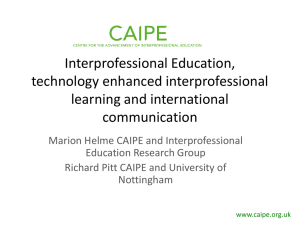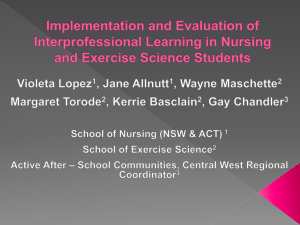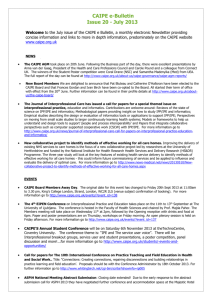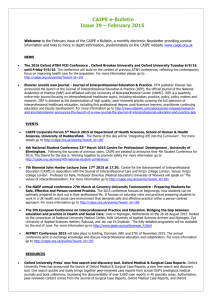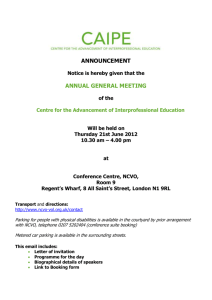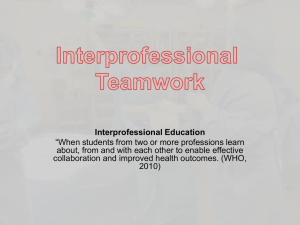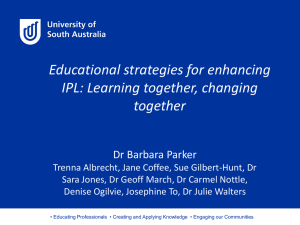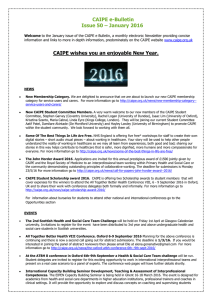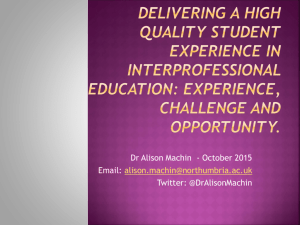IPL
advertisement
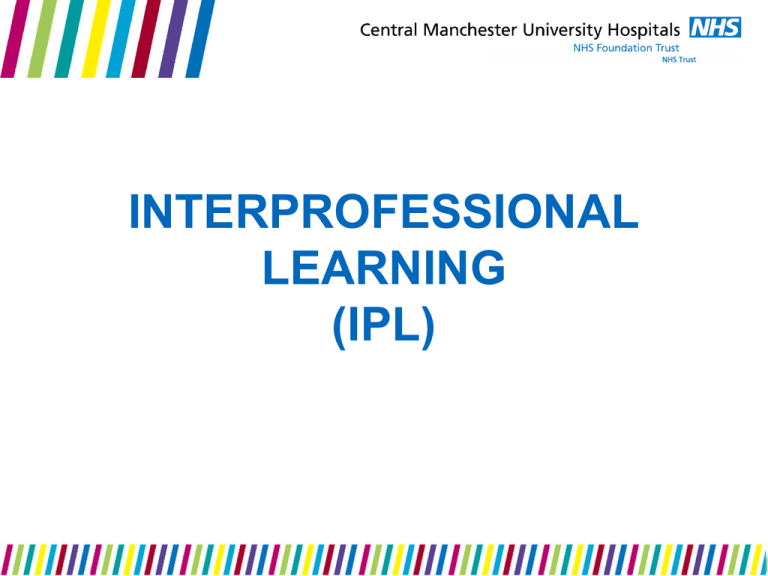
INTERPROFESSIONAL LEARNING (IPL) Welcome By the end of this session you will be able to: • Define IPL • Identify the benefits and challenges of IPL • Recognise the skills IPL will help you to develop • Identify how you will be able to access IPL and develop your skills Definition ‘Interprofessional Education occurs when two or more professions learn with, from and about each other to improve collaboration and the quality of care’ (CAIPE 2002) No one profession, working in isolation, has the expertise to respond adequately and effectively to the complexity of many service users’ needs’ (CAIPE 2001) Professional Issues • Healthcare can be fragmented, specialised with professional division of labour with distinct roles, which can lead to possible conflict. • Mutual interdependency makes collaboration essential to achieve patient outcomes. • Professional boundaries exist, with differing views of the patient. (Finn et al 2010) Benefits • Increased job satisfaction • Develop knowledge of other professions skills and abilities • Develop team working and collaborative working skills • Improved teamwork • Greater understanding of roles • Mutual respect • Improved communication • Decreased costs • Recognition of other available resources Improved Patient Care Examples of IPL in Practice • Spoke placements with other professions • MDT meetings • Observation of care provided by other professionals • Ward rounds • Discussion about patient care • Simulations • Seminars • Practice Education website What now? • What will you do?.... – Area Specific – Topic Related – Critical Incident Analysis – Simulation – clinical skills – Spokes – Project/Case Study Useful Information • • • • CAIPE http://www.caipe.org.uk/ Centre for Interprofessional e-learning http://www.cipel.ac.uk/ European Interprofessional Education Network http://www.eipen.org/ Higher Education Academy http://www.health.heacademy.ac.uk/ipe References • • CAIPE The Centre for the Advancement of Interprofessional Education (2002) CAIPE (2001) - Principles of Interprofessional Education http://www.caipe.org.uk/about-us/defining-ipe/ • Finn, Rachael ; Learmonth, Mark ; Reedy, Patrick (2010) Some unintended effects of teamwork. Social science and medicine. 70(8) 1148-1154 • Christine A. Ateaha CA, Snowb W, Wenerc P, MacDonaldd L, Metgee L, Davisa P, Frickef M, Ludwigg S, Andersonh J. ( (2010) Stereotyping as a barrier to collaboration: Does interprofessional education make a difference? Nurse Education Today • • Volume 31, Issue 2, February 2011, Pages 208–213 References • • • • • • CARE QUALITY COMMISSION (2009) Review of the involvement and action taken by health bodies in relation to the case of Baby P Available online: http://www.cqc.org.uk/_db/_documents/Baby_Peter_report_FINAL_12_May_0 9_(2).pdf [accessed 5/10/11] DEPARTMENT OF HEALTH (2009) Transforming Community Services: Enabling New Patterns of Provision. Available online: http://www.dh.gov.uk/prod_consum_dh/groups/dh_digitalassets/documents/dig italasset/dh_093196.pdf accessed 28/3/2012 DEPARTMENT OF HEALTH (2010a) Quality, Innovation, Productivity and Prevention. Available online: http://www.dh.gov.uk/en/Healthcare/Qualityandproductivity/QIPP/index.htm accessed 4/10/11 KENNEDY I (2001) The Bristol Royal Infirmary Inquiry. Available online: http://www.bristol-inquiry.org.uk/final_report/report/index.htm [accessed 4/10/11] LAMING (2003) The Victoria Climbie Inquiry. Available online: http://www.dh.gov.uk/prod_consum_dh/groups/dh_digitalassets/documents/dig italasset/dh_110711.pdf accessed 26/3/2012 NHS NORTH WEST (2009) North West Non Medical Education Plan 2010-13. Available online: https://northwest.ewin.nhs.uk/.../North-West-NonMedicalEducation- Commissioning-Plan-20102013- accessed 2/4/12

